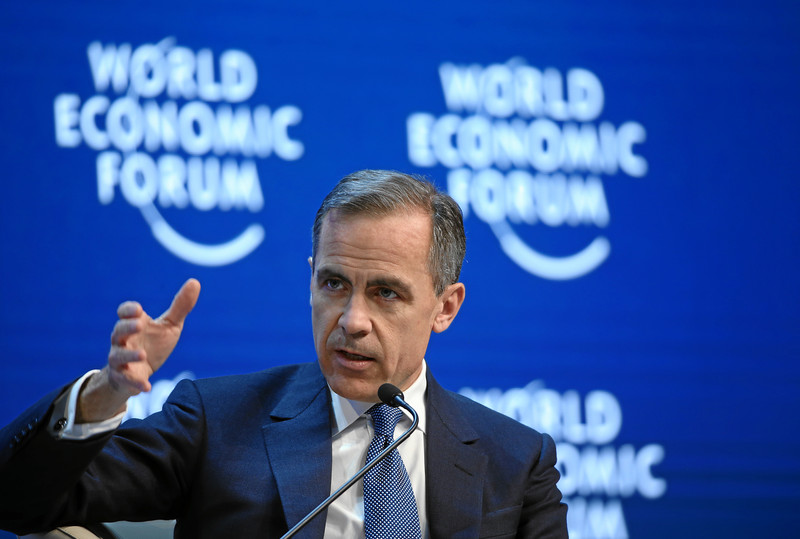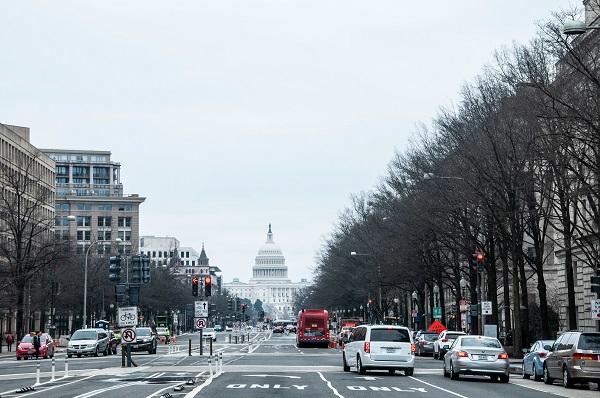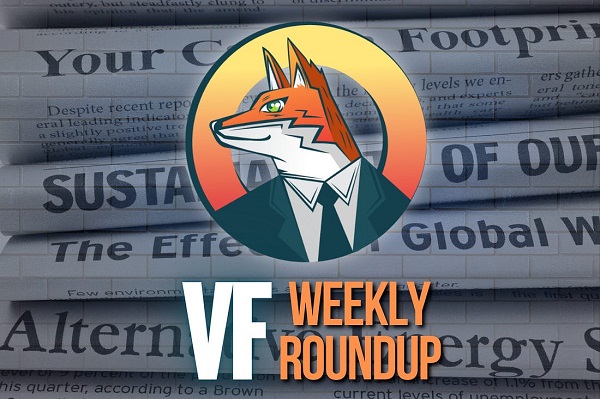Uncategorized
Newspaper reprints controversial cartoon of Serena Williams

MELBOURNE, Australia — A cartoon of Serena Williams that has been widely condemned as a racist depiction of the tennis great has been partially reprinted on the front page of the Melbourne-based newspaper that initially published it.
The Herald Sun newspaper printed an edited portion of the cartoon — featuring 23-time Grand Slam winner Williams jumping on a broken racket during her dispute with a chair umpire in the U.S. Open final — among caricatures of other famous people Wednesday under the headline “Welcome to the PC World.”
The newspaper, which has Australia’s largest circulation, has defended its cartoonist Mark Knight’s depiction of Williams and is asserting that the condemnation, which has come from all parts of the world, is driven by political correctness.
“If the self-appointed censors of Mark Knight get their way on his Serena Williams cartoon, our new politically correct life will be very dull indeed,” the paper said on its front page.
Williams has won the Australian Open singles title seven times at Melbourne Park, including in 2017 when she was pregnant. She is a crowd
In comments published by News Corp., Knight said that he created the cartoon after watching Williams’ “tantrum” during her U.S. Open final loss to Naomi Osaka on Saturday and that it was designed to illustrate “her poor
Knight reportedly has disabled his Twitter account after his post of the cartoon attracted tens of thousands of comments, mostly critical.
During the final against Osaka, Williams got a warning from the chair umpire for violating a rarely enforced rule against receiving coaching from the sidelines. An indignant Williams emphatically defended herself, denying she had cheated. A short time later, she smashed her racket in frustration and was docked a point. She protested and demanded an apology from the umpire, who penalized her a game.
Critics of Knight’s cartoon described it as a clear example of a stereotype facing black women, depicting Williams as an irate, hulking, big-mouthed black woman jumping up and down on a broken racket. The umpire was shown telling a blond, slender woman — meant to be Osaka, who is Japanese and Haitian — “Can you just let her win?”
“I was deeply offended. This is not a joke,” said Vanessa K. De Luca, former editor-in-chief of Essence magazine, who wrote a column about the U.S. Open furor.
The cartoonist “completely missed the point of why she was upset,” De Luca told The Associated Press. “It was about her integrity, and anybody who doesn’t get that is perpetuating the erasure that so many black women feel when they are trying to speak up for themselves. It’s like our opinions don’t matter.”
In a social media post, Peter Blunden, managing director of News Corp.’s operations in the state of Victoria, said: “Australia’s finest cartoonist Mark Knight has the strongest support of his colleagues for his depiction of Serena Williams’ petulance. It’s about bad
This isn’t the first time a cartoon in a News Corp. newspaper has drawn allegations of racism. In 2009, civil rights leaders and others criticized a New York Post cartoon that some interpreted as comparing President Barack Obama to a violent chimpanzee.
In Britain, where fiercely competitive tabloids often trade in sensationalism, Rupert Murdoch-owned newspapers have been accused of sexism, racism and xenophobia over the years. Last year a former editor of the Murdoch-owned Sun, Kelvin MacKenzie, quit as a contributor to the tabloid after writing a column comparing a soccer player with part-Nigerian heritage to a gorilla.
Many years of outrage over articles and cartoons did little to hurt Murdoch’s power over British politics and media, though his papers’ underhanded practices did. Murdoch was forced to shut down the 168-year-old tabloid News of the World in 2011 after the revelation that its employees had eavesdropped on the phone voice mails of celebrities, politicians and crime victims.
Australian indigenous playwright and actress Nakkiah Lui tweeted in response to the front page, saying the Herald Sun needed to “chill.”
“Freedom of speech doesn’t mean freedom above criticism,” she said.
“What we have is a bunch of people who get paid to publicly exercise their implied freedom to speech then whining when people disagree with what they have had the privilege of being paid to say,” she added.
Australian writer Maxine Beneba Clarke said she believed the front page demonstrated a “misunderstanding” of the criticism
“I think it’s really interesting that the Herald Sun has not included really any other caricatures or cartoons of black people — either Aboriginal people or African-American people, black people of any descent,” Clarke, who is of Afro-Caribbean descent, told Australian Broadcasting Corp.
Cartoonist Paul Zanetti, a friend of Knight, said cartooning was under threat from political correctness, and the Herald Sun front page “spelt out exactly where we are at this point.”
“Political correctness is really all about censoring, it’s about being bullied into conforming to a view of the world,” he said.
Rod McGuirk, The Associated Press
Uncategorized
Poilievre on 2025 Election Interference – Carney sill hasn’t fired Liberal MP in Chinese election interference scandal

From Conservative Party Communications
“Yes. He must be disqualified. I find it incredible that Mark Carney would allow someone to run for his party that called for a Canadian citizen to be handed over to a foreign government on a bounty, a foreign government that would almost certainly execute that Canadian citizen.
“Think about that for a second. We have a Liberal MP saying that a Canadian citizen should be handed over to a foreign dictatorship to get a bounty so that that citizen could be murdered. And Mark Carney says he should stay on as a candidate. What does that say about whether Mark Carney would protect Canadians?
“Mark Carney is deeply conflicted. Just in November, he went to Beijing and secured a quarter-billion-dollar loan for his company from a state-owned Chinese bank. He’s deeply compromised, and he will never stand up for Canada against any foreign regime. It is another reason why Mr. Carney must show us all his assets, all the money he owes, all the money that his companies owe to foreign hostile regimes. And this story might not be entirely the story of the bounty, and a Liberal MP calling for a Canadian to be handed over for execution to a foreign government might not be something that the everyday Canadian can relate to because it’s so outrageous. But I ask you this, if Mark Carney would allow his Liberal MP to make a comment like this, when would he ever protect Canada or Canadians against foreign hostility?
“He has never put Canada first, and that’s why we cannot have a fourth Liberal term. After the Lost Liberal Decade, our country is a playground for foreign interference. Our economy is weaker than ever before. Our people more divided. We need a change to put Canada first with a new government that will stand up for the security and economy of our citizens and take back control of our destiny. Let’s bring it home.”
Uncategorized
Canada Needs A Real Plan To Compete Globally

From the Frontier Centre for Public Policy
Ottawa’s ideological policies have left Canada vulnerable. Strategic action is needed now
As Canada navigates an increasingly complex geopolitical landscape, the next federal government must move beyond reflexive anti—Americanism regardless of its political leanings. Instead, Canada should prioritize national interests while avoiding unnecessary conflict and subservience.
The notion that Canada can stand alone is as misguided as the idea that it is only an economic appendage of the United States. Both perspectives have influenced policy in Ottawa at different times, leading to mistakes.
Rather than engaging in futile name-calling or trade disputes, Canada must take strategic steps to reinforce its autonomy. This approach requires a pragmatic view rooted in Realpolitik—recognizing global realities, mitigating risks, governing for the whole country, and seizing opportunities while abandoning failed ideologies.
However, if Washington continues to pursue protectionist measures, Canada must find effective ways to counteract the weakened position Ottawa has placed the country in over the past decade.
One key strategy is diversifying trade relationships, notably by expanding economic ties with emerging markets such as India and Southeast Asia. This will require repairing Canada’s strained relationship with India and regaining political respect in China.
Unlike past Liberal trade missions, which often prioritized ideological talking points over substance, Canada must negotiate deals that protect domestic industries rather than turning summits into platforms for moral posturing.
A more effective approach would be strengthening partnerships with countries that value Canadian resources instead of vilifying them under misguided environmental policies. Expand LNG exports to Europe and Asia and leverage Canada’s critical minerals sector to establish reciprocal supply chains with non-Western economies, reducing economic reliance on the U.S.
Decades of complacency have left Canada vulnerable to American influence over its resource sector. Foreign-funded environmental groups have weakened domestic energy production, handing U.S. industries a strategic advantage. Ottawa must counter this by ensuring Canadian energy is developed at home rather than allowing suppressed domestic production to benefit foreign competitors.
Likewise, a robust industrial policy—prioritizing mining, manufacturing, and agricultural resilience—could reduce dependence on U.S. and Chinese imports. This does not mean adopting European-style subsidies but rather eliminating excessive regulations that make Canadian businesses uncompetitive, including costly domestic carbon tariffs.
Another key vulnerability is Canada’s growing military dependence on the U.S. through NORAD and NATO. While alliances are essential, decades of underfunding and neglect have turned the Canadian Armed Forces into little more than a symbolic force. Canada must learn self-reliance and commit to serious investment in defence.
Increasing defence spending—not to meet NATO targets but to build deterrence—is essential. Ottawa must reform its outdated procurement processes and develop a domestic defence manufacturing base, reducing reliance on foreign arms deals.
Canada’s vast Arctic is also at risk. Without continued investment in northern sovereignty, Ottawa may find itself locked out of its own backyard by more assertive global powers.
For too long, Canada has relied on an economic model that prioritizes federal redistribution over wealth creation and productivity. A competitive tax regime—one that attracts investment instead of punishing success—is essential.
A capital gains tax hike might satisfy activists in Toronto, but it does little to attract investments and encourage economic growth. Likewise, Ottawa must abandon ideological green policies that threaten agri-food production, whether by overregulating farmers or ranchers. At the same time, it must address inefficiencies in supply management once and for all. Canada must be able to feed a growing world without unnecessary bureaucratic obstacles.
Ottawa must also create an environment where businesses can innovate and grow without excessive regulatory burdens. This includes eliminating interprovincial trade barriers that stifle commerce.
Similarly, Canada’s tech sector, long hindered by predatory regulations, should be freed from excessive government interference. Instead of suffocating innovation with compliance mandates, Ottawa should focus on deregulation while implementing stronger security measures for foreign tech firms operating in Canada.
Perhaps Ottawa’s greatest mistake is its knee-jerk reactions to American policies, made without a coherent long-term strategy. Performative trade disputes with Washington and symbolic grandstanding in multilateral organizations do little to advance Canada’s interests.
Instead of reacting emotionally, Canada must take proactive steps to secure its economic, resource, and defence future. That is the role of a responsible government.
History’s best strategists understood that one should never fight an opponent’s war but instead dictate the terms of engagement. Canada’s future does not depend on reacting to Washington’s policies—these are calculated strategies, not whims. Instead, Canada’s success will be determined by its ability to act in the interests of citizens in all regions of the country, and seeing the world as it is rather than how ideological narratives wish it to be.
Marco Navarro-Génie is the vice president of research at the Frontier Centre for Public Policy. With Barry Cooper, he is co-author of Canada’s COVID: The Story of a Pandemic Moral Panic (2023).
-

 2025 Federal Election8 hours ago
2025 Federal Election8 hours agoPoilievre To Create ‘Canada First’ National Energy Corridor
-

 2025 Federal Election22 hours ago
2025 Federal Election22 hours agoMainstream Media Election Coverage: If the Election Was a NHL Game, the Ice Would be Constantly Tilted Up and to the Left
-

 Automotive2 days ago
Automotive2 days agoAuto giant shuts down foreign plants as Trump moves to protect U.S. industry
-

 Energy1 day ago
Energy1 day agoTrump Takes More Action To Get Government Out Of LNG’s Way
-

 Health1 day ago
Health1 day agoSelective reporting on measles outbreaks is a globalist smear campaign against Trump administration.
-

 COVID-192 days ago
COVID-192 days agoTrump’s new NIH head fires top Fauci allies and COVID shot promoters, including Fauci’s wife
-

 2025 Federal Election1 day ago
2025 Federal Election1 day agoMark Carney is trying to market globalism as a ‘Canadian value.’ Will it work?
-

 International15 hours ago
International15 hours agoFREE MARINE LE PEN!’: Trump defends French populist against ‘lawfare’ charges






